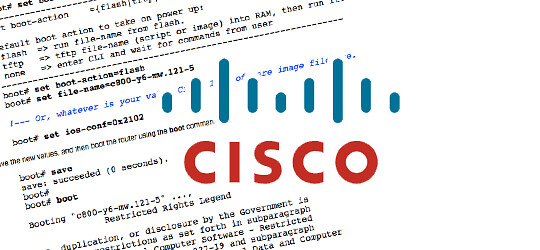
Introduction
In today’s digital landscape, the need for robust security measures has never been more critical. With cyber threats evolving at a startling pace, small businesses, startups, and IT professionals must prioritize the safety of their internet-facing applications. This is where vulnerability assessments come into play. By pinpointing potential security weaknesses, these assessments provide a proactive approach to defending against cybercriminals looking to exploit any gaps in your digital defenses.
What is a Vulnerability Assessment?
A vulnerability assessment is an essential tool in the cybersecurity toolkit. It involves a comprehensive analysis to identify potential weaknesses within a system that could be exploited by attackers. This process goes beyond merely scanning for known vulnerabilities; it evaluates the entire security posture of an organization. By systematically identifying vulnerabilities, businesses can take informed steps to mitigate risks and reinforce their defenses.
The significance of a vulnerability assessment lies in its ability to uncover hidden threats that may not be immediately apparent. These assessments help organizations understand their security landscape, prioritize vulnerabilities based on risk, and develop an action plan for remediation. This proactive approach is crucial for maintaining the integrity and confidentiality of sensitive data.
For small businesses and startups, a vulnerability assessment is particularly vital due to limited resources and potential exposure to cyber threats. By conducting regular assessments, these organizations can stay one step ahead of potential attackers and safeguard their digital assets.
Common Security Vulnerabilities Uncovered
Security vulnerabilities come in various forms, each posing unique risks to organizations. One common vulnerability is outdated software, which can leave systems exposed to attacks. Cybercriminals often exploit known flaws in outdated software to gain unauthorized access to systems or networks. Regular updates and patches are essential to address these vulnerabilities and fortify defenses.
Another prevalent vulnerability is weak passwords. Despite advancements in cybersecurity, many individuals and businesses still rely on easily guessable passwords. This creates an easy entry point for attackers to gain access to sensitive information. Implementing strong password policies and multi-factor authentication can significantly enhance security.
Phishing attacks also continue to be a significant threat. Attackers use deceptive emails or messages to trick individuals into revealing sensitive information. A comprehensive vulnerability assessment can identify weak points in an organization’s email security, enabling businesses to implement effective training and anti-phishing measures.
The Comprehensive Process of Vulnerability Assessment
Conducting a vulnerability assessment involves several key steps, from scoping to remediation and follow-up. The process begins with scoping, where the organization’s security objectives and priorities are defined. This step ensures that the assessment aligns with the organization’s specific needs and goals.
Following scoping, the assessment moves into the scanning phase. Here, automated tools are used to identify potential vulnerabilities within systems and networks. These scans provide a baseline understanding of the organization’s security posture and highlight areas that require further investigation.
Next comes the analysis phase, where the identified vulnerabilities are evaluated in detail. This involves understanding the potential impact of each vulnerability and prioritizing them based on risk. The assessment report generated during this phase serves as a roadmap for remediation, guiding organizations in addressing the most pressing vulnerabilities first.
The final step is remediation and follow-up. Organizations work to implement corrective actions to mitigate identified vulnerabilities. This may involve patching software, updating configurations, or enhancing security protocols. Regular follow-up assessments help ensure that remediation efforts are effective and that new vulnerabilities have not emerged.
Exploring the Types of Vulnerability Assessments

Vulnerability assessments come in various forms, each tailored to specific areas of an organization’s digital environment. Network assessments focus on identifying vulnerabilities in the organization’s network infrastructure. This includes evaluating firewalls, routers, switches, and other network components to ensure they are adequately secured.
Web application assessments target vulnerabilities within websites and online applications. These assessments identify potential weaknesses in code, configurations, and access controls that could be exploited by attackers. With the rise of e-commerce and online services, web application assessments are increasingly vital.
Desktop assessments focus on individual workstations and devices, ensuring they are up-to-date and compliant with security policies. Mobile app assessments evaluate the security of mobile applications, identifying vulnerabilities that could compromise user data or system integrity.
The Crucial Role of VAPT in Security Strategy
Vulnerability Assessment and Penetration Testing (VAPT) form a powerful combination in an organization’s security strategy. While vulnerability assessments identify potential weaknesses, penetration testing goes a step further by simulating real-world attacks to assess the effectiveness of security measures.
During a penetration test, ethical hackers attempt to exploit identified vulnerabilities, mimicking the tactics of malicious actors. This process provides valuable insights into how well an organization’s defenses hold up against actual threats. By integrating VAPT into their security strategy, organizations gain a deeper understanding of their vulnerabilities and can take proactive measures to address them.
The importance of VAPT lies in its ability to provide a holistic view of an organization’s security posture. By identifying vulnerabilities and testing defenses, businesses can prioritize their security efforts and allocate resources effectively. This approach not only enhances security but also builds confidence in the organization’s ability to protect sensitive data.
Conclusion
In the fast-paced digital era, security vulnerabilities pose a significant risk to businesses of all sizes. However, by adopting a custom approach to vulnerability assessments, small business owners, IT professionals, and startups can proactively identify and address potential weaknesses in their defenses.
Regular vulnerability assessments, coupled with penetration testing, provide a comprehensive understanding of an organization’s security posture. By prioritizing vulnerabilities, implementing effective remediation strategies, and staying vigilant against emerging threats, businesses can safeguard their digital assets and maintain trust with their customers.
To further explore the benefits of vulnerability assessments and enhance your cybersecurity measures, consider partnering with Firefly. Our expert team is ready to guide you through the process and help you achieve comprehensive cybersecurity. Visit Firefly’s website to get started on your path to mastering security today.







